So you’ve decided to destroy your fictional civilization and for reasons of verisimilitude, you want to draw on a historical model. Your first thought may be to rotoscope the collapse of the Western Roman Empire … and why not? It worked so well for Isaac Asimov. The problem is it worked for a lot of other authors, too—the Fall of Rome is well-chewed gristle at this juncture. Perhaps other models would make a nice change?
Granted, other models may not be as well known as the Roman one, at least to Western readers. Generations of Westerners learned Latin and read Roman history; generations read Gibbon’s Decline and Fall.
Plus, other collapses were, no doubt, so thorough that we have no inkling they even happened.
Still, there are some collapses and calamities about which we have some knowledge. I have a few suggestions.
Boom, Baby, Boom
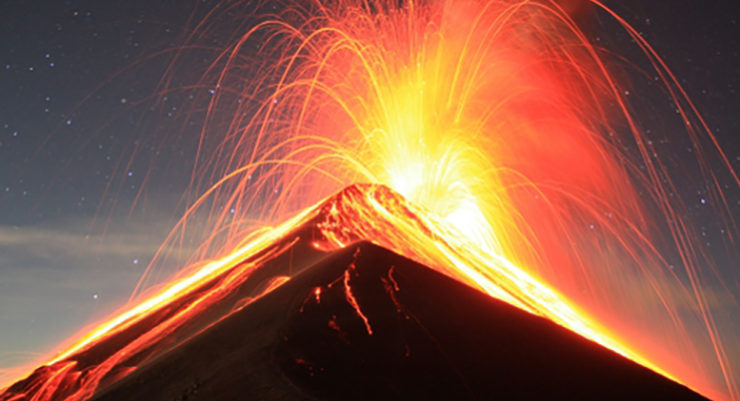
Large eruptions like Toba 70,000 years ago or the Yellowstone eruption 640,000 years ago are very sexy: one big boom and half a continent is covered by ash. But why settle for such a brief, small-scale affair? Flood basalt events can last for a million years, each year as bad as or worse than the 18th century Laki eruption that killed a quarter of the human population in Iceland. Flood basalts resurface continental-sized regions to a depth of a kilometer, so it’s not that surprising that about half the flood basalts we know of are associated with extinction events. In terms of the effect on the world, it’s not unreasonable to compare it to a nuclear war. A nuclear war that lasts one million years.
N. K. Jemisin’s Broken Earth series gives some idea what a world in the midst of the formation of a Large Igneous Province might be like. In Jemisin’s world, there are people who can at least moderate the effects of an eruption. In ours, of course, there are not. As horrific as the Broken Earth is, the reality of a flood basalt event would be much, much worse. And that’s leaving aside resurfacing events on the scale of Venusian eruptions.
Holocene Big Melt
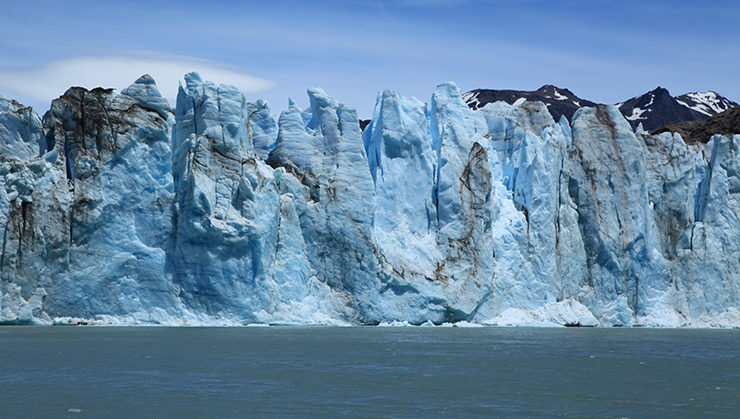
The transition from glacial to interglacial predates the oldest known cities, but if there had been towns comparable to Uruk or Jericho 12,000 years ago, we might not necessarily know about it. We do, however, have some idea how the world changed when it warmed. Humans love to settle along rivers and seashores and the latter are radically altered when ice sheets turn to liquid water. Take, for example, Sundaland:
When sea levels were lower, Sundaland’s land area was close to twice as extensive as it is now. If humans built villages along the coastline twelve millennia ago, any relics would now be under many meters of sea water. Humans have occupied the region for a very long time, but our understanding of what the coastal cultures were doing during the glacial periods may be hobbled by the fact that a lot of the evidence is currently inaccessible.
We live in an interglacial period. Many of the ice-sheets that fed sea level rise are long gone. The good news for writers is the ice sheets that are left are still more than adequate for some serious coastal restructuring. Add in the disruptive effects on agriculture and a post-Big Melt world could be a much emptier1 , unfamiliar-looking world. Consider, for example, George Turner’s (probably more obscure than I realize) classic Drowning Towers.
Bronze Age Collapse
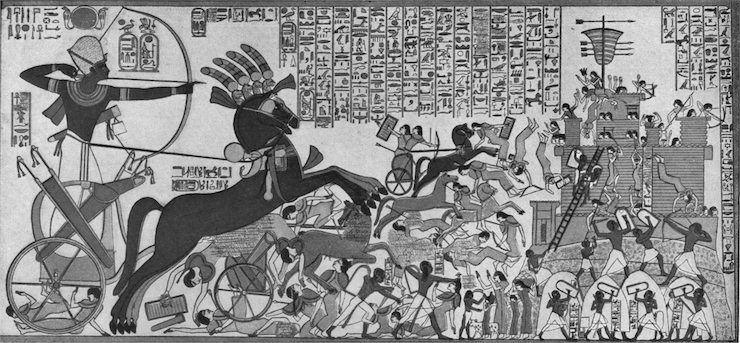
In the 12th century BC, cities all around the Eastern Mediterranean were burned, trade routes collapsed, large states declined, and some vanished entirely. It took centuries for civilization to recover. The powers that rose were in many cases new nations, speaking languages that would have been unfamiliar to people living in those regions a few centuries before. Whatever happened to the Bronze Age cultures of the Mediterranean seems to have been devastating.
One problem with incredibly devastating events is record-keeping becomes much harder when one’s city is being burned. Even when records were kept, the languages they were written in were replaced. As a result, what seems to have been an End-Permian catastrophe to the Fall of Rome’s K/T is more obscure than it really should be, and the possible causes more of a matter of disputed conjecture than one might expect. Our friend climate change appears, of course (because cultures dependent on predicable weather for agriculture react badly to sudden climate changes2 ), among a myriad of other possibilities.
One of my favourite hypotheses is disruptive technological change: cheap iron replacing expensive bronze had as a side effect the overturning of a complex social order, and thus the sudden collapse of everything dependent on that social order. It would be extremely comic if all it took to duplicate one of the most dramatic setbacks human civilization has suffered was something as simple as global computer networks. Or Twitter.
Trade Decline

Lunar colonists might look to Petra as an example of what can be achieved in a hostile, demanding environment. Surrounded by desert, the people of the Nabataean capital were remarkably adept at harnessing the resources they did have. In fact, they not only survived, they prospered, thanks to their strategic location in a Mediterranean-Middle Eastern trading network. At least, they prospered until the city declined and fell into ruin.
It is believed that the city fell to several earthquakes (which destroyed a sophisticated water storage and management system) and also declined due to a shift in trade routes. The Arab conquest may have completed the catastrophe.
Petra could be a model for the decline and fall of nations unaware that their trading partners have alternatives, or more SFnally, space colonies. Natural disasters and shifts in trade routes can befall whole planets. A minor subplot in Clarke’s Imperial Earth touches on this: what of Titan’s hydrogen export-based economy when demand for reaction mass falls dramatically?
New World Expansion
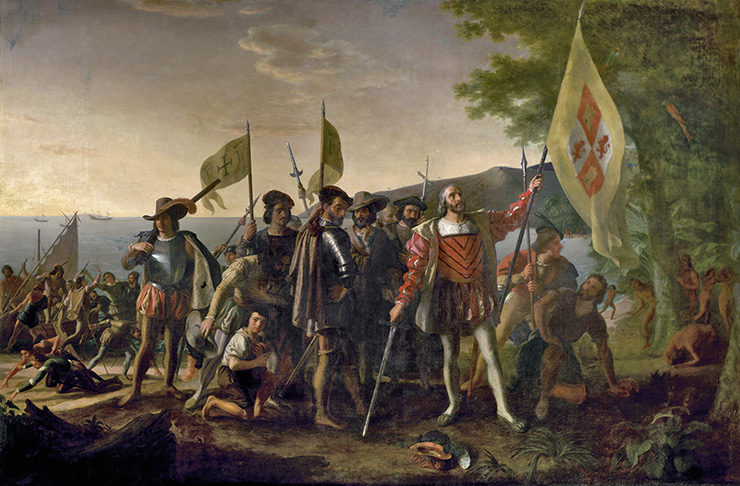
Fifteenth-century Europeans were the equivalent of plague rats; they carried with them a millennia-long heritage of contagious diseases. They were descended from the survivors of the epidemics and pandemics, which means they enjoyed a degree of resistance to the diseases they carried. The unfortunates of the New World had no resistance. Their populations declined 90% or more over the next centuries. Small wonder that people struggling to survive in a post-apocalyptic hellscape were unable to prevent waves of infectious, violent invaders from stealing their land.
SFnal diseases tend to be far more lethal than the historical ones, probably because killing 999 in 1000 is more dramatic than 9 in 10. Ninety percent lethal virgin-field infections are still more than sufficient to kick the legs out from under heretofore successful civilizations, to leave the survivors unable to maintain their records and infrastructure, and unable to deal with other challenges that might arise (like the arrival of land-hungry, genocidal strangers). How precisely this might come about NOW might be a challenge to imagine, given modern medicine. I suppose one could imagine people suddenly deciding en masse to abandon proven technology like vaccines, but that seems pretty far-fetched…
While most authors opt for virgin field epidemics that kill all but one in a thousand or one in a million, there is at least one exception: Algis Budrys’ Some Will Not Die begins in the aftermath of a plague that has eliminated 90 percent of the population.
Natural disaster, technological missteps, epic cultural mishaps…it’s all good for the author who needs to sweep away the old to make room for the new. Or perhaps, if the mishap is large enough, for those who long for the tranquil quiet of an empty world.
1: I see some worried faces out there. Take comfort in the fact that the rich may have the resources to survive the calamity their own profit-seeking behaviour will cause. Even better, they can arrange for such history books as are written to lay the blame on the plebs who have been swept away by the demise of the old order.
2: Again, no need to worry that this will needlessly inconvenience our oligarchs. Even if agriculture shuts down for a few decades, the unnecessary masses can be converted into a nutritious slurry to keep their betters fed.
In the words of Wikipedia editor TexasAndroid, prolific book reviewer and perennial Darwin Award nominee James Davis Nicoll is of “questionable notability.” His work has appeared in Publishers Weekly and Romantic Times as well as on his own websites, James Nicoll Reviews and Young People Read Old SFF (where he is assisted by editor Karen Lofstrom and web person Adrienne L. Travis). He is surprisingly flammable.
[1]I see some worried faces out there. Take comfort in the fact that the rich may have the resources to survive the calamity their own profit-seeking behaviour will cause. Even better, they can arrange for such history books as are written to lay the blame on the plebs who have been swept away by the demise of the old order.
[2]Again, no need to worry that this will needlessly inconvenience our oligarchs. Even if agriculture shuts down for a few decades, the unnecessary masses can be converted into a nutritious slurry to keep their betters fed.










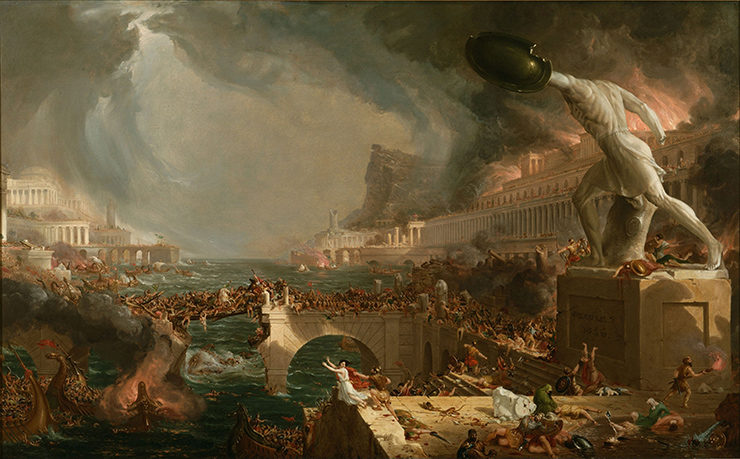
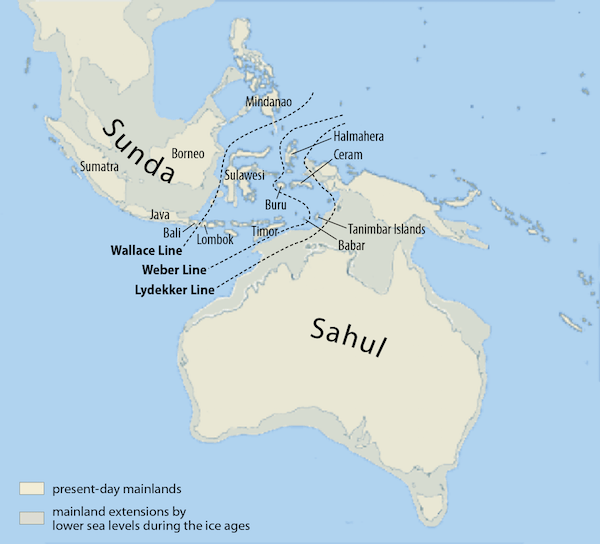
“Natural disasters and shifts in trade routes can befall whole planets.”
Scalzi’s Interdependency series is exploring that path.
The problem with the Decline and Fall model is it is so slow. In fact the process was almost imperceptible to those experiencing it. Sure times were rough but things would get back to normal sooner or later – right? Kind of lacking in drama.
The Bronze age collapse, or as I like to call it the transition, remains mysterious and probably had multiple causes. Iron availability may have contributed, and climate change and assorted other factors.
The New World empires weren’t all that stable to start with. The Aztecs are in a precarious state due to restless subject peoples and a weak emperor. Not in the shape to take a challenge. The Inca were recovering from a disputed succession so ditto.
Are empires generally stable? Sure, the Roman Empire lasted in one form or another until 1923, and of course China is impressively robust but there have been tons of other empires that showed up, vexed their neighbours for a century or two and then vanished. No seat for Srivijaya at the UN….
“Boom, Baby, Boom” was done by Niven and Pournelle in “Lucifer’s Hammer”. A novel which has not aged well at all. They added “New World Expansion” to that in “Footfall”, which also has aged less badly, though still not well.
Good point. The Roman Empire was unusually stable I believe because their system not only conferred material benefits encouraged inclusion. A provincial in the conquered territories could become a citizen. His descendants would become local notables and some might end up as Senators in Rome or even Emperor. In other words subjects were invested in the Empire and it was seen as an ideal for centuries to come. Subjects also became invested in the Chinese Empire. That seems to be the secret to a lasting empire.
Re: plague mechanisms – antibiotic resistance is probably just as viable a path as anti-vax numbskulls.
Can’t we do both?
A novel where Out Heroes survive the Plague of Doome which was triggered by a changing climate which was enhanced by Global Thermonuclear War between New Zealand and Chile settle in the New Utopia of Guatemala and, in the last page, look up and see a comet. Getting larger every night…
@3/James Davis Nicoll: Why 1923? The Holy Roman Empire was dissolved in 1806.
One of Mehmed the Conquerer’s titles was Qayser-i Rûm.
@9 JanaJansen: I think James is taking the Ottoman Empire as a continuation of the Byzantine (AKA Eastern Roman) Empire. That’s questionable. I see the fall of Constantinople more as the annexation of the rump of one empire by another, but I guess you could make a case.
A model for a mix of climate change and shifting trade routes would be the cities of inner Arabia, places like Ubar, which were once wealthy from the incense trade, but failed completely as desertification hampered the overland routes and improved technology made the sea route more favorable. Plus a massive sinkhole opening up under one of the most important cities.
@10 James: By that token you could argue Genghis Khan’s empire lasting until 1948. Timur claimed rulership through Genghis, the Mughals claimed rulership through Timur, and the British Monarch held the title Emperor/Empress of India. Actually, I’m just assuming the title vanished in 1948. Maybe it’s still part of the titulary.
the Roman Empire lasted in one form or another until 1923
Why say that it ever ended? If you’re going to say that Byzantium was the heir to Rome (and that’s certainly what the Byzantines thought), and that the Ottomans were the heirs by conquest to Byzantium, why not take the next step and say that the Turkish Republic is the Ottoman Empire under a new name, with some changes to the system of government? Sure, it isn’t the whole empire as it was in 1914, but then the 1914 empire was a lot smaller than the 1700 empire. And you’ll find a lot more Turks now who’ll talk about the Ottomans as “us” than you would people in 1454 who’d recognise continuity between Constantine XII and Mehmet Fatih.
“The unfortunates of the New World had no resistance.”
Why didn’t it also run the other way, with left-pond germs infecting the right-pond arrivals?¹ Population density too low to generate any good plagues to begin with?
(¹ “Regarding your proposed sequel to The War Of The Worlds, Mr Wells, I find the death of the entire human race not commercially appealing…”)
Actually, I’m just assuming the title vanished in 1948. Maybe it’s still part of the titulary.
It did.
Why didn’t it also run the other way, with left-pond germs infecting the right-pond arrivals?¹ Population density too low to generate any good plagues to begin with?
Not enough good zoonoses. The Europeans brought their domesticated animals with them to the New World, and they proved to be a huge source of disease; they didn’t take domesticated New World animals home with them because there weren’t many.
And also your population density point; the Europeans were city-dwellers, the New Worlders weren’t. If you want to breed some good diseases, put your humans close together in a city with a lot of domesticated animals.
The relative lack of genetic diversity of New World populations may also have had an effect – don’t know.
of course China is impressively robust
That’s very much a presentist point of view. Most of China’s current land area was conquered in the last couple of centuries, China lacks a common language, it has spent much of its history made up of several antagonistic polities, and the current government bases its claim to legitimacy very much on the “eternal China” idea.
But put me in charge of a united Europe and give me the power to murder historians who don’t agree with me, and I’ll come up with a very similar case that Europe has been a single unified culture and polity going back thousands of years, with only brief interruptions that we can safely ignore.
Interesting article! Honestly, author could read some historical and social sciences of different cultures now in ruin. There is good information available for many of them.
I think it’s important to not concibe destruction as a single, linear relationship (cause: event => consequence: destruction). Even natural disasters or climatic change have more explanation, for example, the things people did or didn’t do to avoid it or manage the risk. Pompeii by Robert Harris, even if it isn’t that rounded as a novel, shows the multiple factors behind the eruption.
Also, natural disaster can be associated with changes in trade and social unrest. A drought affects agriculture, if you don’t have enough to trade, your political relationship with allies and others change, that could lead to social unrest and attempts of political coup. I’m more interest in reading stories with processes and the interconectedness of multiple factors.
One thing I remember from Jared Diamond’s Collapse (worth a read if we are in this topic) is this question: What was thinking the Rapa Nui who chopped the last tree? If I remember correctly, Diamond stated that he probably didn’t realised it and that we usually don’t see the collapse coming.
#13, @Forrest_Leeson: there is a controversial theory that syphilis did spread from the New World to the Old, but there are epidemiological factors that made plagues more of a thing in Eurasia and Africa. Jared Diamond’s Guns, Germs and Steel has a lot on this.
The Phlegrean Fields could be a good candidate for a near future volcanic apocalypse. Some think they killed off the last Neanderthals, and they seem to become active again recently.
I seem to recall a TV documentary about the collapse of the Maya civilization 1,000 years ago. It discussed the more plausible theory as being that the society’s increasing obsession with ritualized warfare led to reduced manpower for maintaining the precarious agricultural system (“slash and burn” being unable to keep up with the encroachment of the jungle) that led to collapse of the food supply and subsequent abandonment of complex urban centers.
@16, It would be more accurate to say the Chinese Empire fell and rose several times over the centuries with numerous shifts in territory and an impressive variation in the origins of the Imperial Families. A united Chinese Empire was a persistent ideal much sought and often achieved but never for long.
@20, All New World civilizations were ultimately limited by the lack of heavy draft animals which made it impossible to for them to move up from hand horticulture. Sooner or latter the agricultural base failed to sustain the population and the whole thing came unstuck. This happened over and over until the conquest introduced horse and oxen.
Just an FYI, the caption under the picture of Petra is wrong. While the structure is called the Al-khazneh that translates out to The Treasury and not the Monastery. The Monastery is farther into the site of Petra.
A possible parallel with the drowning of Sundaland may be the inundation of the land now covered by the Persian Gulf. Interestingly, Sumerian civilization got its start at the head of the Gulf, and I’ve heard speculation that part of the reason that it appeared to spring out of nowhere is that the important sites where its development started are now underwater.
On the subject of Sundaland inundation again – I recently read that some indigenous Australian groups have oral traditions that apparently refer to at least the last stage of this process. Oral traditions going back some 10,000 years or so. Pretty good, if this bears out.
@11, 12: In the same spirit, can we see modern Mexico as a continuation of the Aztec Empire? They kept the name, the capital, and the eagle-and-snake emblem.
#2: Parts of the Decline weren’t so slow, like the Antonine Plague killing off 1/3 of the Roman Empire. Which probably make defending the borders harder, among other effects.
The Incas were recovering from a disputed succession that resulted from probably-European plague killing half the elite.
****
Another glacial flooding option: imagine someone living in the future Missoula Scablands, unaware of the possibility of jokulhaups.
#21: “Sooner or latter the agricultural base failed to sustain the population and the whole thing came unstuck.”
That’s not a take I’ve ever heard before, and Mann’s 1491 and 1493 present the exact opposite view: American agriculture was quite productive and stable (so productive that American crops caused population booms elsewhere, in Europe and China and maybe Africa.)
And the Americas did have cities, including one of the biggest in the world at the time.
#23: Some book tried arguing that the rivers of Eden intersect in what is now the Gulf. I wouldn’t bet on it… but I wouldn’t be surprised if “lost Golden Age/Eden” stories traced back to the flooding of continental shelves and early hardscrabble agriculture arising in response.
I’ve wondered if there are legends from when Lake Agassiz drained, from the former southern shore. Image waking up to find the vast inland sea you live next to has quietly legged it.
@26, productive within the limits imposed by the lack of draft animals. That limited the carrying ability of the land. It was the combination of American crops with Old World farming methods that caused the boom. The Aztecs probably weren’t far from the limit at the time of the Conquest. The Maya had hit it a few centuries before and it was creeping up on the Inca too.
28: Do you have citations or sources for your claims?
“when records were kept, the languages they were written in were replaced. As a result, what seems to have been an End-Permian catastrophe to the Fall of Rome’s K/T is more obscure than it really should be”
That’s a brilliant parallel
@30: Reminds me of this bit from “Fire Upon the Deep” “Sometimes the biggest disasters aren’t noticed at all – no one’s around to write horror stories.”
@8: There’s a couple of prior examples of “cascading disasters.” Heinlein’s “Year of the Jackpot.” Or (satirically) Langford and Grant’s “Earthdoom!”
Greetings all,
I have read at least one commentary (can not remember the author’s name right now, but he was a submarine commander in the Royal Navy and theorized that the Minoans might have been the seed of the Atlantis myth) that speculated that the Bronze Age collapse was triggered by an energy crisis. Refining copper and tin (or lead or arsenic which can also be used in bronze alloys) was enormously energy intensive, and that the Mediterranean city literally died from not being able to support their military or civilian metal needs.
The fact that Thera blew its top around 1600 BC probably didn’t help matters.
REgards
Frank
#20, @Russell H:
Mesoamerica and the Andean region had continuous civilization for millennia. This just doesn’t accord with the evidence. Because the Spanish consciously destroyed written records the story of these civilizations isn’t well-known, but the archeological evidence is clear. You can’t extrapolate from the fall of the Maya and Mound Builder cultures to the entire hemisphere.
#25, @drs:
The Antonine plague happened 1300 years before the end of the Roman Empire. Those are some pretty long-term effects.
@27
I doubt there was anything quiet about Lake Agassiz draining. It was probably the loudest thing most of the people near it had ever heard. Every rapids you’ve ever heard, times a hundred..
princessroxana @@@@@2:
In fact the process was almost imperceptible to those experiencing it. Sure times were rough but things would get back to normal sooner or later – right? Kind of lacking in drama.
Well, by the early 5th Century you have entire provinces overrun by “barbarians” and Rome itself besieged (and sacked) for the first time in centuries. St. Augustine felt he had to defend Christianity against pagan claims that the catastrophes besetting the Empire (particularly the western parts) were the fault of people abandoning the old gods for Christianity. (And Augustine himself died in the North African city of Hippo while it was being besieged by a Vandal army.)
James Davis Nicoll @@@@@ 3:
Sure, the Roman Empire lasted in one form or another until 1923
Surely you mean 1917? Are you implying that the Tsar wasn’t the true successor to the Byzantine Emperors? For shame!
Still inaudible from the other side of the lake, though. And you don’t get noise from lots of water flowing (stand beside the Amazon and listen) you get noise from water flowing past obstructions.
drs @@@@@ 26:
And the Americas did have cities, including one of the biggest in the world at the time.
But not nearly as many, not nearly as large, and not for nearly as long, compared to the history of cities in the Old World. (Sure, Tenochtitlan might have reached something like 150 or 200 thousand by 1500, making it comparable to Paris. But then you have Constantinople/Istanbul, Cairo, Tabriz, Vijanagar, Hangzhou, and Beijing — all of them larger, with Beijing at something like 700,000. And there’s nothing in the pre-Columbian Americas comparable to the nearly continuous presence of cities with populations of 500,000-1 million in the Old World from ca. 50 BC onward.)
So there was potentially much greater scope for diseases to spread and mutate in Old World urban centers.
Carl @@@@@ 34:
Russell H was clearly referring to the general collapse of the Classic and Post-Classic Maya city states only, not to Mesoamerica or South America as a whole.
@29, ‘Guns, Germs and Steel’is where I got it.
@34, Not continuous. The Americas show a pattern of rising and falling urban cultures.
The beautiful (if you can call it that) thing about the Fall of Rome is that it left a significant chunk of the population intact. Stories can be written about the survivors/successors. The problem with an extinction event is that, unless you’re setting your book book in some pre/post-historic stone age, killing off the entire population of a continental swath of land with a volcanic eruption leaves nothing to write about. At least nothing interesting, imho. But then, I’m not a fan of the post-apocalyptic wasteland genre.
@40,
Yeah, KSR in “Years of Rice and Salt” started with the Black Death depopulating Europe, and moved on from there.
@26
Some book tried arguing that the rivers of Eden intersect in what is now the Gulf.
More like the Country of the two Rivers, the Tigris and the Eufrates. Incredibly fertile in the past. Most of agricultural crops in the Old World come from that area: plants endemic to the region that were domesticated. That is, varieties more apt to be grown were obtained.
The region, as it is widely known, became arid as it is today because of mismanagement of irrigation: they used water with a relatively high concentration of salt and did NOT irrigate in excess (so as to wash the precipitated salt). This had the effect of increasing the salinity of the soil over generations, reducing progressively its fertility.
This process is insidious and takes a long time, but it is deadly, since not only affects the growth of plants, but also eventually degrades the structure of the soil and increases wind and water-driven erosion, so the upper part of the soil, the most rich in nutrients, is lost. That equals stop motion apocalypse, slow and unescapable (if you do know know what the problem is or lack the resources to take action).
I love that Thomas Cole painting at the top of the article, but it really works best when you look at it in context with the other paintings in that series, which follow the rise and fall of a civilization (see https://en.wikipedia.org/wiki/The_Course_of_Empire_(paintings)).
The more I read about the fall of the Roman Empire, the more I realize the impact of the rise of other, neighboring peoples. Empires ‘fall’ not so much because they collapse as because they are outgrown by others. Witness the current decline of US dominance, which is more because others are overtaking us than because we are collapsing. And because we are undoing the ties of alliance that keep the current system in place. Wars are frequently just the punctuation that emphasizes trends that had been going on for a long time. Often, the zombies of empires persist long after their power does, in a state of “imperial overstretch” where they still think they are on top, but lack the abilities they once had. Only in retrospect is the situation really clear.
Interesting article, but if you’d equated any human population but Europeans to plague rats–say, the Mongols who (deliberately) introduced the Black Plague to Europe, eradicating a third of its population–you’d likely be reviled as a Nazi by an online outrage mob and lucky not to lose your job. While I very much doubt you meant it like that, it did seem worth mentioning.
#39, @princessroxana:
Again, not in Mesoamerica or the Andes. They had dynastic changes and barbarian invasions, just like, say, China, but remained urbanized.
What you write does describe, say, the Mediterranean basin, or northern Africa (home of Carthage), though.
CGP Grey did a great video called “Americapox: The Missing Plague” that addressed why Europeans had plagues (and brought over diseases) but early America didn’t (and didn’t send back any diseases in exchange):
https://www.youtube.com/watch?v=JEYh5WACqEk
I suspect a much smaller proportion of deaths would be enough to kill a high-tech civilization (e.g., many of the dominant cultures in the present); I think we underestimate how much knowledge of processes people carry in their heads rather than in clear documentation, and how easily misused machinery would become unusable and irreplaceable.
Rome again, because it didn’t fall until 1453 when Mehmet took Constantinople. People think the fall of the western empire was it, but it had been a backwater for centuries. The center of Rome was in the East. They never referred to themselves as Byzantines. They always called themselves Romans and the place they lived Romania (hey! we still have one of those! wonder why?).
We make an artificial division for our convenience but there was continuity both in custom and law.
Interesting coming back to this article after everything that’s happened in the past couple of years.
Something that’s cropped up in conversation in relation to the “Thanos Snap” is the concept of hive collapse. Societies need a critical mass of people to support the continuing function, and an apocalyptic architect may not even need to “remove” (not even necessarily kill, possibly send them fleeing in a disorganised rabble ahead of some menace) the majority of the population to trigger a “hive collapse” of a culture. I’ve seen speculation on-line that “Thanos Snap” would likely have sent most galactic cultures into a terminal decline due to the “hive collapse” hypothesis.
On a related note, I’ve recently been looking at the events triggered by the Black Death (can’t think why). It understandably triggered a lot of fear, but one of the most shocking things is that the infected died who otherwise might have lived because the people that would have been their carers (for any other illness) were so terrified they just noped right out. When the infected showed the first symptoms, the should-have-been-carers reportedly just closed the doors on the plague house, abandoning everyone and everything inside and fled. Even now it’s hard to imagine that amount of terror.
Another underreported aspect of the plague was that it killed sheep as well as humans in as great (if not greater) numbers. No sheep=no wool. As a consequence a lot of secondary deaths were triggered by the collapse of the wool trade. Not only because suddenly the clothes and blankets people needed to survive the winters weren’t available, but all the jobs in the supply chain vanished overnight, and all the industries set up to support that supply chain (and the workers in the supply chain) suffered similarly.
It obviously had a massive transformative impact on European civilisation and culture, but looking back at it I find it amazing that Europeans survived at all
The Black Death was hardly limited to Europe. Plague was omnipresent through history until my grandparent’s lifetimes.
@50/Carl – I think we might be using the same terms but I think we might be intending different meanings. I’m using the Black Death to refer to a specific outbreak of bubonic plague that reached pandemic levels, that affected Europe, Asia, North Africa and any other location that was in contact with those regions, and dropped below pandemic status around the middle of the 1350’s, after killing as many as 200 million, including at least half of Europe. Modern outbreaks of bubonic plague still occur, but aren’t referred to as the Black Death, killing about a hundred people a year. It’s still with us, and even with modern antibiotics, it will still literally decimate a population unless an outbreak is controlled with quarantine, social distancing and almost-obsessive levels of hand washing and general sanitation. I’m not sure what you mean with your statement that the Black Death “was omnipresent until my Grandparents lifetimes”. Either you’re using Black Death the same way I am, which means your grandparents remembered the 14th century, or if you’re using it as a general term for bubonic plague, I’m not sure what you mean by omnipresent, as any health professional anywhere in the world is still on the lookout for it. For me, at least, that still feels omnipresent.
<shrugs> I never suggested the Black Death was unique to Europe. Just expressed surprise European civilisation survived, such as it was. Aren’t you?
@50: The black death is still present, and there is a small but rising number of antibiotic resistant strain infections every year. It is our oldest predator, and while it is in very much reduced circumstances it ain’t gone. It is still stalking us, and refining its techniques.
@WillMayBeWise, I said that “plague” was omnipresent through my grandparents’ time, meaning generic plagues, which hit everything from the beginning of recorded history (look at the Bible, for one, or the many plagues that hit ancient Athens) to the Spanish Flu. There are still dangerous diseases that kill many, many people (notably malaria) but they are no longer omnipresent. Even a particular respiratory virus you might be thinking of isn’t killing 1/3 of even the worst-hit places, although some Brazilian cities are getting into scary territory.
I probably should have made the separation between the Black Plague and the more generic “plague” more specific.
No, not surprised at all. Chinese civilization also survived. Athenian civilization survived their plagues. Heck, Egyptian civilization survived plagues before Athens was a city. I can’t think of a time that a civilization was ended by a disease, in fact. You could argue that European plagues (influenza, smallpox, etc.) made the American civilizations vulnerable to European conquests and genocides (see Jared Diamond’s Guns, Germs, and Steel for the most famous exposition of this point) but even then, without the foreigners showing up and being immune, probably would not have exterminated entire cultures.
@53/Carl – <shrugs> can you be more specific about how you define “plague”, please? I’m afraid the biblical definition is a bit vague. For instance, America is about to experience a plague of insects compatible to the locusts Moses unleashed on Egypt. The Dancing Plague of 1518 didn’t exactly rack up a high body count, yet it’s still counted (as the name suggests) as a plague. The fact that, as I mentioned, health workers the world over are actively still on the look out for signs of plague, including Bubonic, because the threat is still with us.
Also, I think your conclusion that disease isn’t capable of destroying a civilisation is erroneous. It’s true that there’s no definitive examples, because those that were ended solely by disease left no definitive evidence. So the only ones we know were irreversibly damaged by disease were the ones that were conquered. There you get the chicken and egg argument. Otherwise we have evidence of civilisations that simply disappeared. Without evidence of what destroyed them, disease can’t be ruled out as the deciding factor in their collapse.
@54, WillMayBeWise: I’m using “plague” in the very general sense of “a deadly, widespread disease outbreak.” (Despite quotes, I just made up that definition.) So smallpox in the New World post-Columbian Exchange, but not malaria in, say, Ecuador in 1997 (because that’s not an outbreak). At least in my head, using the word to refer to the dancing mania or locust swarms is a metaphor, like saying there has been a “flood” of violence.
There is no reason that a civilization ended by disease would not leave evidence, and in fact it inevitably would, in the form of things like bodies ravaged by disease, and of course written records.
@55/Carl – now, that definition just raises more questions.
So, what’s the criteria for you to consider a disease “deadly”? And how does an outbreak qualify as “widespread”?
As for disease leaving evidence like bodies or writing, unless someone takes the time to do preserve either, the ravages of time mean entropy quickly claims them. The same can be said for other “ends” as well.
For instance, one of the hypothesise for why Roanoke Island was deserted was disease. Another was conflict with nearby tribes. Yet another was the colonists moved in with a friendly tribe. Despite the short amount of time the colony was out of contact, no trace of what happened could be found beyond the wood-carved word CROATOAN. No bodies. No other writing. No discernible signs of violence. Centuries later anthropologists/historians actually asked the descendants of the local tribes (someone might have done that before, but didn’t bother to record it), and they had tales supporting all three hypothesise, as well as a few more of a supernatural bent, but by that time the anthropologists couldn’t rule out cultural contamination “seeding” those stories, so can’t be considered reliable evidence.
Sticking with North America, 9th Century Viking epics indicate they’d established several settlements along the North East American mainland coast, but only one (in Canada) has been found that stood up to serious archeological scrutiny. Again, there’s no evidence for why these settlements disappeared. Historians point to the sagas describing frequent conflict with the natives (as you’d expect when someone rocks up to land you consider yours and declares it’s now theirs) as a possible reason, but the sagas glorify death as much as victory, and there’s not even anything along the lines of “Bjorn sailed to the West to join his doomed brothers against their enemies, and was never seen again.” Mention of the settlements just disappear. The seems consistent (to me, at least) with them being the victims of pestilence. To a warrior culture who’s worst fear is to die in bed, that must have been an ignoble end, and thus not worthy of being recorded in the sagas.
Admittedly, both examples are from colonies, not the main civilisation. If we want to look at a dominant civilisation that simply vanished, we need to look at Ancient Egypt. There’s no doubt that the Land of Punt was real, and of equivalent power to the Ancient Egyptians. It was a valuable trading partner, and the Egyptians record many dealings with them. Yet trade decreased, with no record of why, and then stopped. Today, we don’t even know where Punt was located, never mind know what happened to it. No mention of enemies, natural disaster, climate change or indeed plague. Punt and its fate is one of the great mysteries of the world. Punt at least left traces of itself with Egypt. I’d speculate that’s there’s many more ancient cultures that disappeared like Punt, but without even leaving the echoes Punt did in Egypt. Impossible to prove, given the lack of evidence for their existence.
@WillMayBeWise: the key word in that comment, in my head, is “speculate.” No evidence presented.
@57
Horn of Africa. Mummified baboons which were documented to be from Punt have been recovered and through DNA and Isotope testing were found to be related to the still living baboons in the region. Other animals, such as secretary birds, have also been found in tombs and are from the same region. Only cranks and fringe theorists still think it was anywhere else, the science is pretty settled now. HTH.
@58/Carl – fair point
@59 / Kayom – <shrugs> I’m not sure we define “we know where Punt was located” the same way. For me, the statement “we’ve narrowed the location to somewhere within 2 million square miles” is not the same as “we know where Punt was”. That’s like saying I know where Luxembourg is because I know it’s north of the Alpine Mountain Range and west of the River Rhine.
It presumably had at least one port, given that trade with Egypt was only via sea. So we know Punt’s border at least extended to the coast, but we don’t know where along the coast it was. We don’t know if Punt was a city-state, with that port being their only settlement. We don’t know where their borders began, so we don’t know how far inland Punt extended or if it encompassed more than one settlement. We have no primary evidence of Punt at all, only secondary evidence from the Egyptians. For all we know, Punt might not have existed at all, and there’s been a fundamental misunderstanding of what the Egyptians meant when they referred to Punt. Of course, there could be recent archeological discoveries that provide independent verification of Punt, discoveries that confirm it’s existence and where at least some of its territory lay. If you’re privy to that please share.
With that caveat that in place, unless you’re privy to those recent discoveries, we also don’t know what led to Punt, assuming it existed at all, “disappearing”. Which is the point of why mentioned Punt in the first place